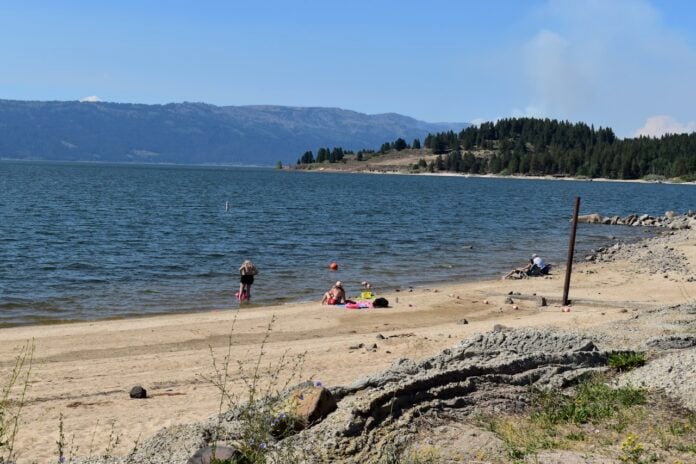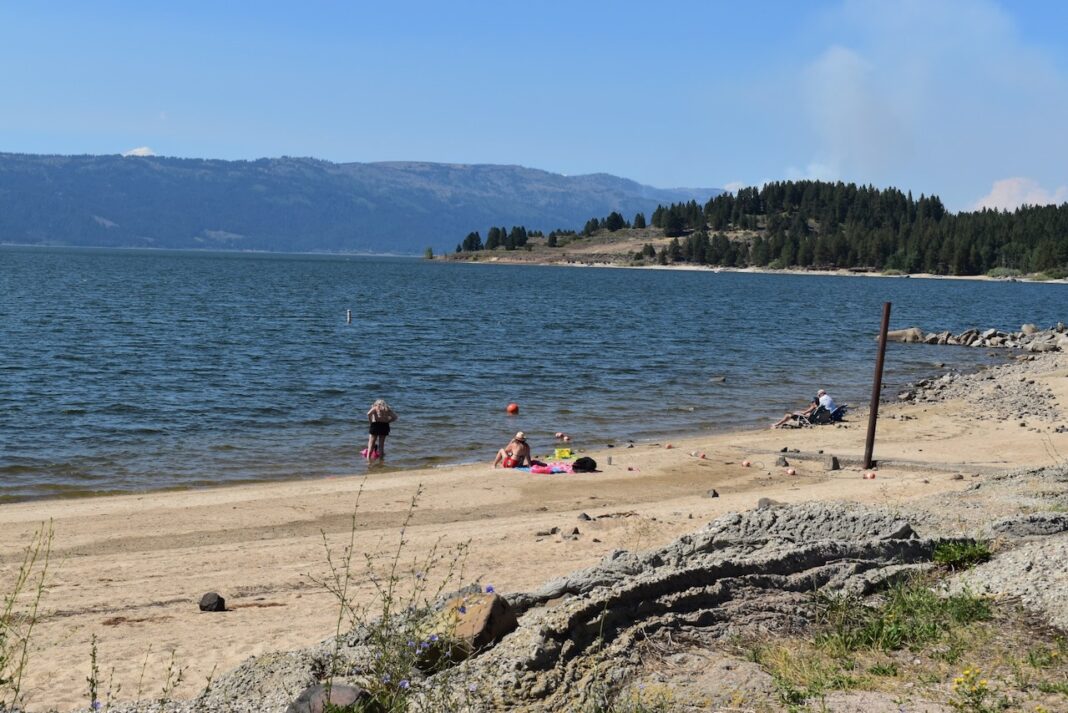Toxic levels of cyanobacteria were observed on Lake Cascade last weekend, according to the Idaho Department of Health and Welfare.
The state agency issued a health advisory for Lake Cascade around the Van Wyck Boat Ramp to urge public caution. The advisory applies only to the area around the boat ramp, not all of Lake Cascade.
Water samples showed high levels of cyanotoxins produced by cyanobacteria, also known as blue-green algae, which can harm people, pets, and livestock that touch the water or drink it.
AJ McWhorter, a DHW spokesperson, said the state is closely monitoring other areas of Lake Cascade for harmful algae blooms and will issue further health advisories as needed.
No treatments are planned for the Van Wyck bloom, but the state will issue a public notice when it naturally subsides.
“There are treatments available to respond to harmful algae blooms, however they are not typically used in Idaho,” McWhorter said.
What do blooms look like?
Cyanobacteria blooms may smell foul and look like blueish-green mats, foam, spilled paint, or surface scum, according to DHW.
Valley Lookout visited the Van Wyck area on Tuesday afternoon, but did not see any obvious signs of a bloom. The health advisory posted on the boat ramp’s bulletin board did not deter groups of beachgoers from enjoying the lake.
Any people or pets who touch water contaminated by a bloom should thoroughly wash off and seek further medical care as needed.
Symptoms of exposure to cyanotoxin include skin irritation, coughing, shortness of breath, red eyes, stomach pain, diarrhea, vomiting, headache, dizziness, and muscle weakness.
Cyanobacteria blooms thrive in sunlight and warmer water with an abundance of nutrients like phosphorus and nitrogen. Lake Cascade is listed as “impaired” under the Clean Water Act, primarily due to high phosphorus concentrations.
The blooms can sicken pets and even kill them. In 2022, a dog died in Gem County after drinking water contaminated by cyanotoxins in the Payette River.
In 1993, 23 cattle died after drinking cyanotoxins in water from Lake Cascade.
Cyanobacteria health advisories are not uncommon on Lake Cascade or around the state. Last year, a health advisory was in place for Lake Cascade from Oct. 18 through Nov. 22, Whorter said.
The Valley County Soil & Water Conservation District told Valley Lookout the Lake Cascade blooms are a product of several factors, including shallow depths, stagnancy, lakefront development, wildfire ash, and seasonal weather patterns.
The conservation district roughly estimates Lake Cascade’s economic impact at $100 million per year—a figure the district says is undermined by nutrient-rich waters fueling cyanobacteria blooms.
Without donors like you, this story would not exist.
Make a donation of any size here
“These advisories have serious consequences for residents, visitors, and businesses alike,” the district said in a statement. “They underscore the urgent need for our lake community to unite in support of a substantial restoration effort.”
There are currently nine cyanobacteria advisories in place statewide, including the Lake Cascade advisory.
(EDITOR’S NOTE: This story was updated on Aug. 20 to include comments from the Valley County Soil & Water Conservation District.)






